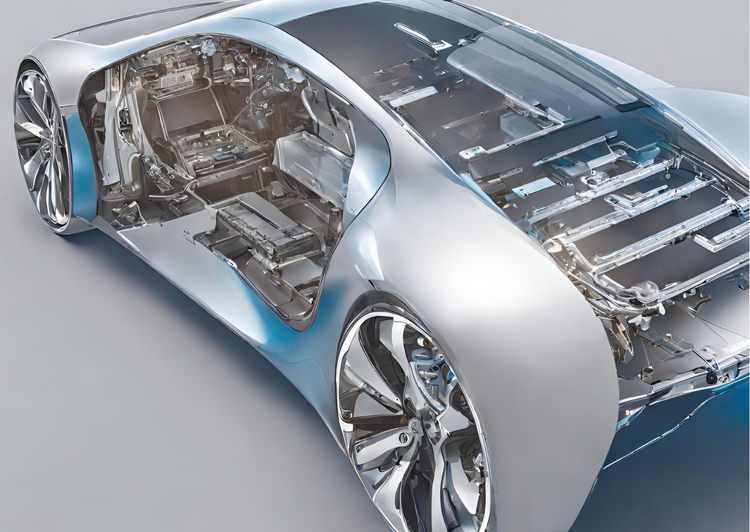Through the eye of future

The dawn of autonomous driving is not just a technological revolution; it represents a fundamental shift in how we perceive mobility, urban planning, and the very fabric of our societies. The convergence of artificial intelligence (AI), software-defined vehicles, and the Internet of Things (IoT) is transforming autonomous driving from a futuristic concept into an imminent reality. This article explores the profound impact of these technologies on the future of transportation and the broader environment.
The Rise of Autonomous Driving
Autonomous vehicles (AVs) are becoming increasingly capable of navigating complex environments with minimal human intervention. Powered by advancements in AI, particularly machine learning and computer vision, AVs can process vast amounts of data from their surroundings, making real-time decisions that were once the exclusive domain of human drivers.
However, the real breakthrough in autonomous driving lies in the transition from hardware-centric to software-defined vehicles. Traditional vehicles have relied heavily on mechanical components with static functionality. In contrast, software-defined vehicles are designed with a flexible, upgradable architecture, where much of the vehicle's functionality—from navigation to entertainment—is governed by software. This allows for continuous updates, enabling AVs to adapt to new driving conditions, regulations, and user preferences without the need for significant hardware changes.
AI: The Brain Behind Autonomous Driving
At the core of autonomous driving is AI, which acts as the vehicle's brain. AI algorithms are responsible for interpreting data from sensors, cameras, and radar systems to understand the vehicle's environment. This includes identifying objects, predicting the actions of other road users, and making split-second decisions to ensure safety and efficiency.
One of the most significant advancements in AI for autonomous driving is the development of deep learning models that can recognize and react to a wide range of scenarios, from a pedestrian stepping onto the road to unexpected obstacles. These models are trained on massive datasets, enabling them to learn from millions of miles of driving experience—far more than any human driver could accumulate in a lifetime.
The Role of Software-Defined Vehicles
The concept of a software-defined vehicle (SDV) is transforming the automotive industry. Unlike traditional vehicles, where software is often locked to specific hardware, SDVs use a centralized computing architecture that separates software from hardware. This decoupling allows for more rapid and continuous software updates, enabling vehicles to improve over time and adapt to new functionalities without hardware upgrades.
For instance, software-defined vehicles can receive over-the-air (OTA) updates, similar to how smartphones update their operating systems. These updates can include new features, bug fixes, and security enhancements, ensuring that the vehicle remains at the cutting edge of technology long after it has left the showroom. This ability to evolve continuously is crucial as AVs need to adapt to rapidly changing environments and regulations.
IoT: Connecting Vehicles with the Environment
The Internet of Things (IoT) plays a crucial role in the autonomous driving ecosystem by enabling vehicles to communicate with each other and with surrounding infrastructure. This interconnectivity is known as Vehicle-to-Everything (V2X) communication, which includes Vehicle-to-Vehicle (V2V), Vehicle-to-Infrastructure (V2I), and Vehicle-to-Pedestrian (V2P) interactions.
Through IoT, autonomous vehicles can access real-time data from traffic lights, road signs, and other vehicles. This data exchange allows AVs to anticipate changes in driving conditions, optimize routes, and reduce traffic congestion. For example, a network of connected vehicles can synchronize their movements to maintain steady traffic flow, reducing the need for stop-and-go driving and thereby lowering emissions.
Moreover, IoT-enabled infrastructure, such as smart traffic lights and connected road sensors, can enhance the safety and efficiency of autonomous driving. For instance, a smart traffic light can communicate directly with an AV to signal an upcoming change, allowing the vehicle to adjust its speed smoothly rather than braking abruptly.
Environmental and Societal Impacts
The integration of AI, software-defined vehicles, and IoT in autonomous driving has the potential to significantly impact the environment and society. One of the most immediate benefits is the reduction of traffic accidents. Human error is a leading cause of road accidents, and AI-driven vehicles, with their ability to process information and react faster than humans, could drastically reduce these incidents.
Furthermore, autonomous driving can lead to more efficient fuel consumption and reduced emissions. AI algorithms optimize driving patterns, avoiding unnecessary acceleration and braking, which are major contributors to fuel inefficiency. Additionally, the rise of electric autonomous vehicles (EAVs) is expected to accelerate the transition to cleaner energy, further reducing the carbon footprint of transportation.
On a societal level, autonomous vehicles promise to make transportation more accessible. They can provide mobility solutions for those unable to drive, such as the elderly and disabled, and offer cost-effective transportation options through ride-sharing models.
However, these advancements also bring challenges. The widespread adoption of AVs could disrupt industries and lead to job losses in sectors such as trucking and taxi services. Furthermore, the ethical implications of AI decision-making in life-and-death situations remain a topic of intense debate.
Conclusion: A Glimpse into the Future
The future of autonomous driving is rapidly unfolding, driven by AI, software-defined vehicles, and IoT. These technologies are not only making vehicles smarter and more capable but are also reshaping the entire transportation ecosystem. As we move toward this new era, it is essential to consider both the opportunities and challenges that come with it. The journey through the eye of the future promises a world where transportation is safer, more efficient, and more sustainable—but it is a journey that will require careful navigation to realize its full potential.
